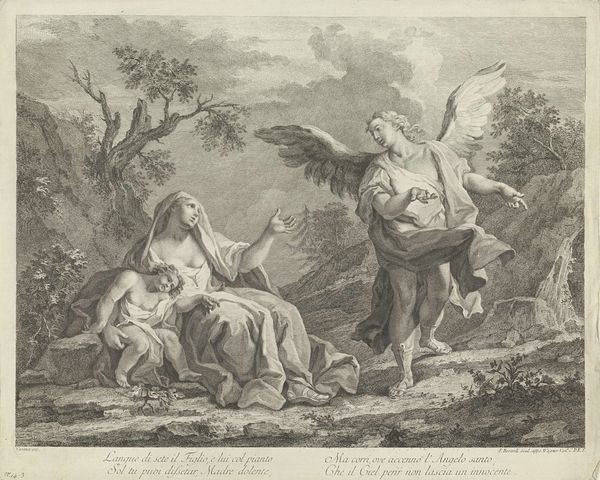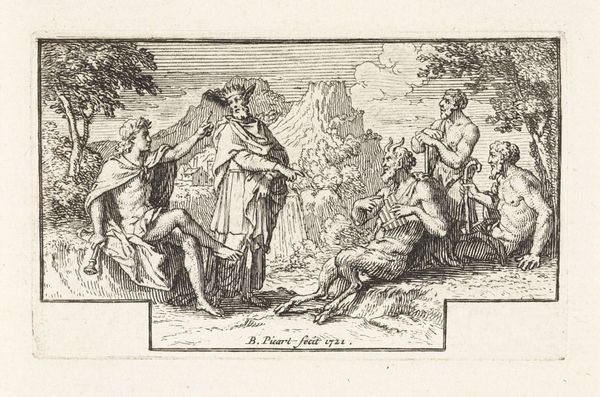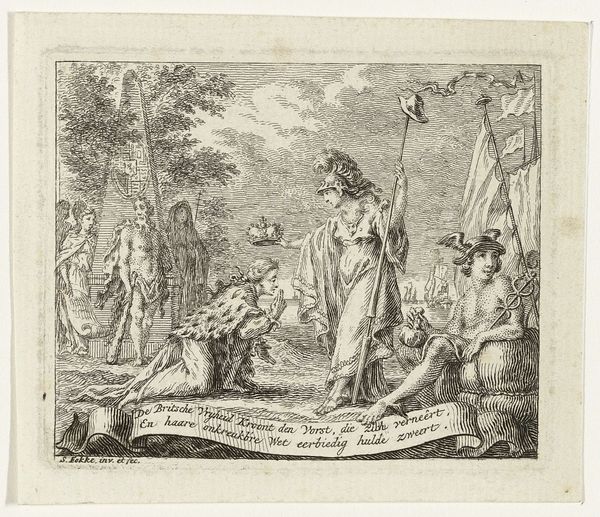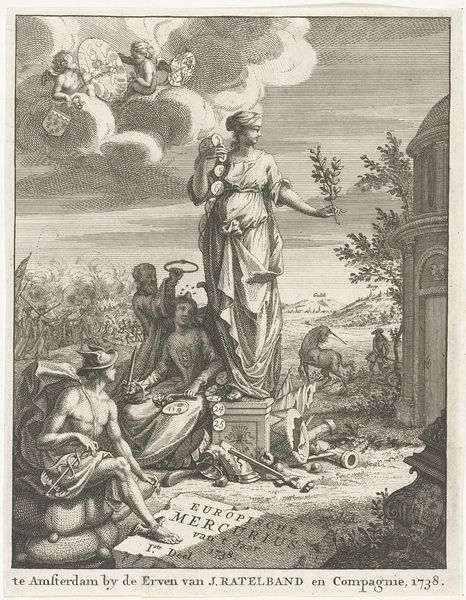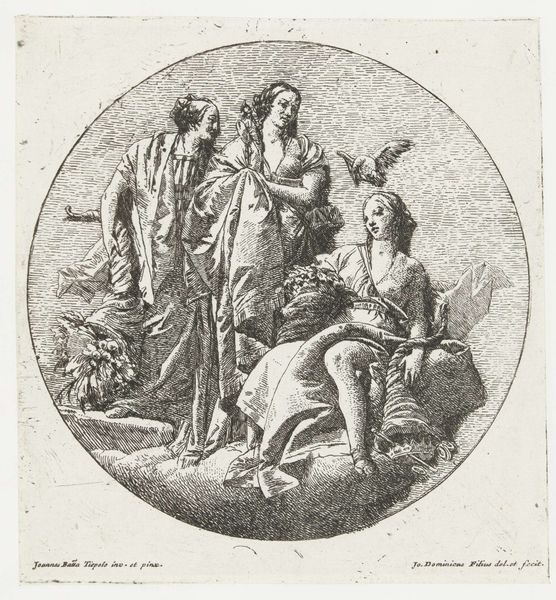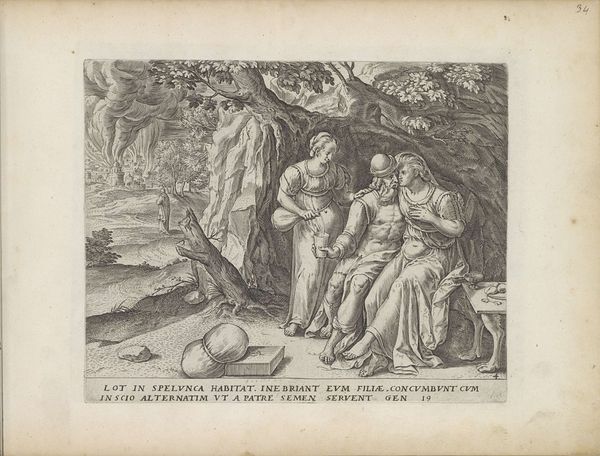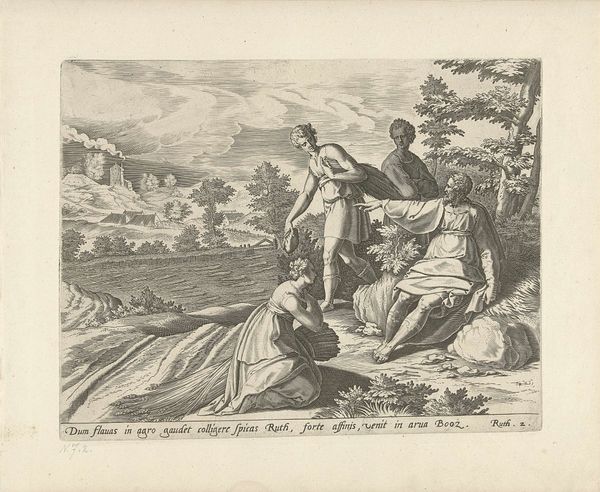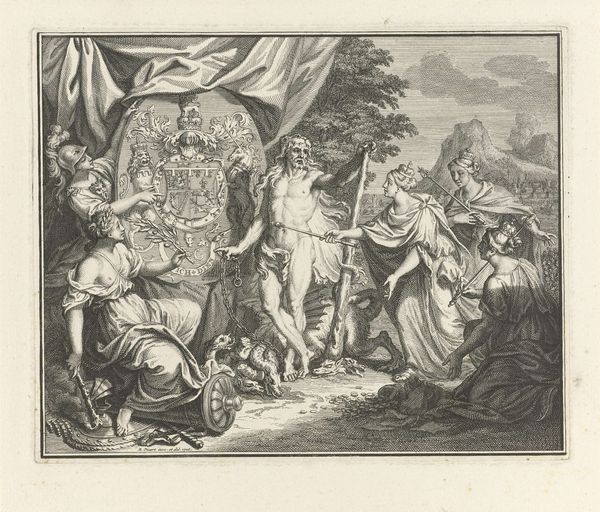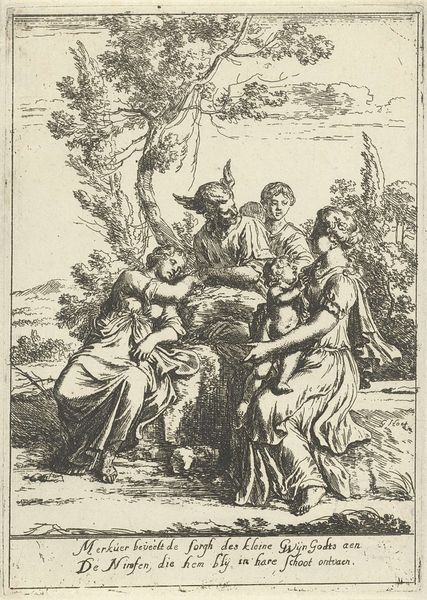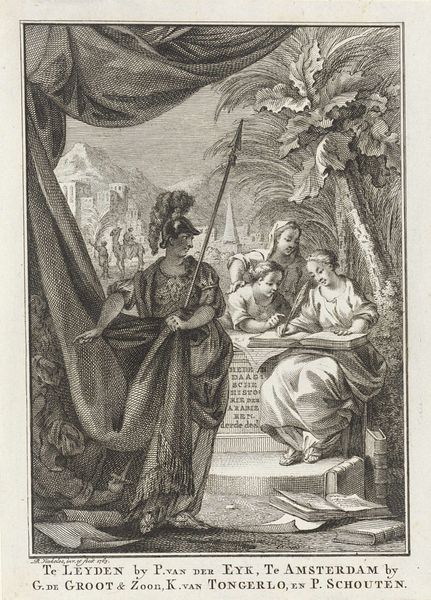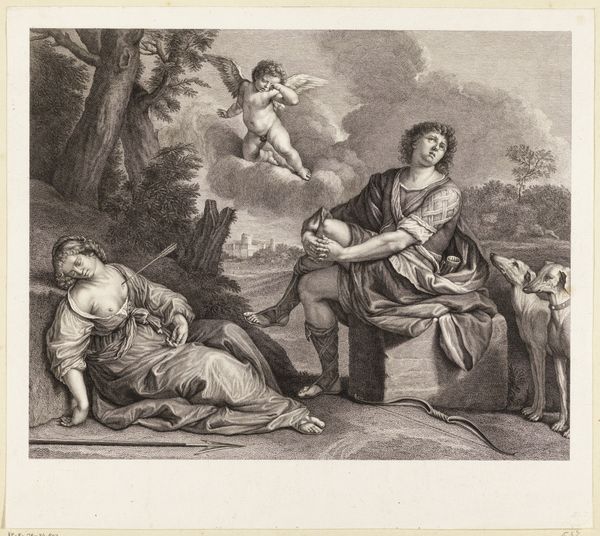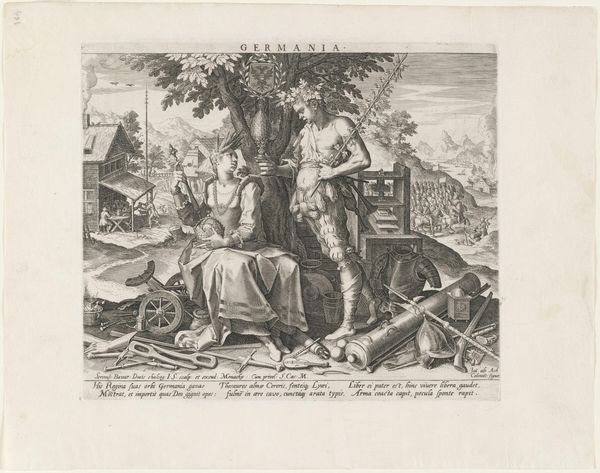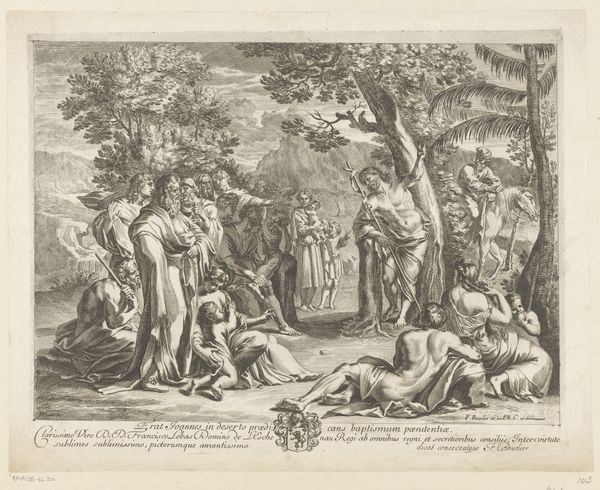
print, engraving
#
baroque
# print
#
old engraving style
#
landscape
#
figuration
#
history-painting
#
engraving
Dimensions: height 213 mm, width 271 mm
Copyright: Rijks Museum: Open Domain
Curator: Look at this print, “Orpa verlaat Ruth en Naomi,” created sometime between 1600 and 1652. It’s currently held in the Rijksmuseum and attributed to Philips Galle. Editor: It strikes me as an image steeped in sorrow. There's such deliberate linearity, almost rigid figures positioned within an ethereal landscape—the departing figure especially seems burdened. Curator: I agree, that sense of sorrow certainly pervades. Galle’s decision to render this biblical scene as an engraving really foregrounds the laborious aspect of printmaking. Look closely; you can practically trace the paths of the artisan, the considered gestures that constructed this tableau from bare material. Editor: I’m particularly drawn to the figure of Orpa departing, carrying a globular form that resembles a globe, but may as well represent the weight of the world. It emphasizes her transition back to her own people, away from Naomi and Ruth. Curator: Precisely! We can examine the historical context as well: How prints like this one served not only to disseminate religious narratives but also acted as objects of trade. The paper itself, the ink, the press—these components held material value in their own right, a stark contrast to our digitally-driven art consumption today. Editor: The symbol of the bare tree is arresting, its branch has snapped and the roots that should sustain it are exposed, indicating a violent storm or breakage. Could this be emblematic of the fractured family relationships being portrayed? Naomi seems almost a defeated figure here. Curator: It makes you consider how such readily reproducible art nevertheless bore a physical connection to the cultural and commercial networks of its time. These lines are not only graphic; they signify labor and exchange. And what stories that tells of craftsmanship during this era! Editor: A world of loss contained in lines on paper—it speaks volumes. A visual metaphor for the complexities of family ties and the heartache of separation rendered with painstaking care. Thank you, I noticed a new emotional aspect in viewing it from your materialistic perspective. Curator: And, for me, looking at it through your symbolic perspective, really enhanced my understanding about the continuity of meaning being visually represented through form. It really ties the emotional elements of the subject and the physicality of art into one holistic piece.
Comments
No comments
Be the first to comment and join the conversation on the ultimate creative platform.
